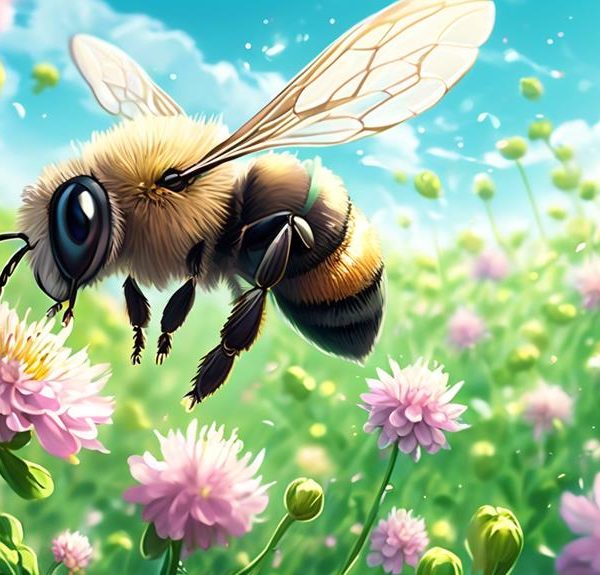Are Basswood trees the secret to attracting Mason bees? Dive into the intricate world of these industrious insects and their ecological preferences.

Do Mason Bees Like Basswood Trees?
Like a bee to a blossom, you're likely drawn to the enigmatic world of Mason bees and their ecological preferences. You're probably wondering, do these industrious insects favor Basswood trees?
As a diligent gardener or nature enthusiast, you understand the intricate relationships between flora and fauna. But when it comes to Mason bees and Basswood trees, the connection may not be as straightforward as you'd think. Could this unassuming tree species hold the key to promoting Mason bee populations?
We'll explore this fascinating topic, and by the end, you'll be buzzing with newfound knowledge.
Key Takeaways
- Mason bees are attracted to Basswood trees for feeding and breeding purposes.
- Basswood trees provide Mason bees with an abundant source of pollen and nectar.
- Mason bees play a vital role in pollinating Basswood trees by carrying pollen from male to female flowers.
- The relationship between Mason bees and Basswood trees exemplifies mutualism in nature.
Understanding Mason Bees
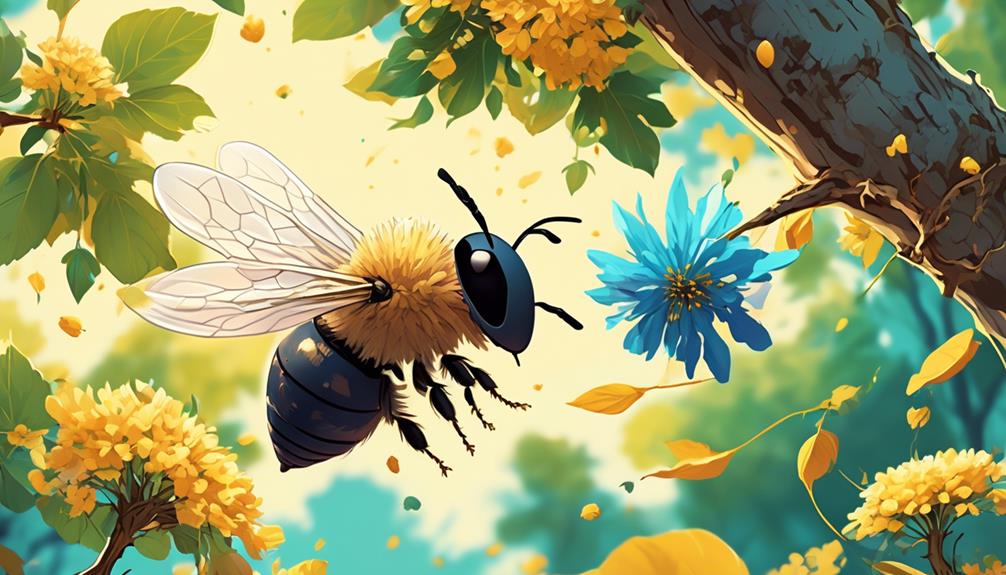
Let's delve into understanding Mason Bees, these tiny pollinators that may not be as famous as honeybees, but play an equally essential role in our ecosystem. You'd be surprised to know that these small creatures are solitary bees, meaning they don't live in colonies like honeybees or bumblebees. They're called 'mason' because of their unique habit of using mud or other malleable materials to construct their nests.
Contrary to popular belief, Mason Bees aren't aggressive. They rarely sting unless threatened, and their sting is much less painful than that of a honeybee. Their docile nature makes them ideal for residential areas and urban gardens.
What makes Mason Bees so crucial for our ecosystem? Well, they're phenomenally efficient pollinators, even more so than honeybees. One Mason Bee can do the work of 100 honeybees. This is because they carry pollen on their belly, where it's more likely to rub off on flowers.
Understanding these hardworking pollinators is the first step in appreciating their value. They're a testament to the fact that, just like in human society, every member of the ecosystem, no matter how small, has an integral role to play.
What Attracts Mason Bees?
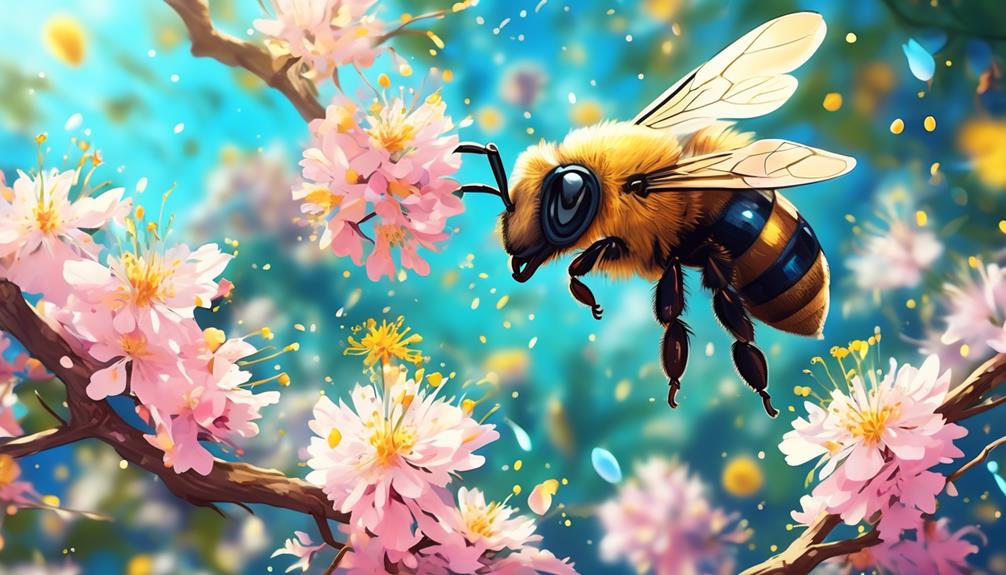
Having grasped the importance of Mason Bees in our ecosystem, you might wonder what exactly draws these industrious pollinators to certain environments. They seek out three primary factors: suitable nesting sites, a variety of flowering plants, and a pesticide-free environment.
Nesting Sites | Flowering Plants | Pesticide-Free Environment |
|---|---|---|
Mason bees prefer tunnels in wood or hollow plant stems. They don't create their own nests, so they rely on existing cavities. | They need a variety of flowering plants that bloom at different times to ensure a constant food supply. They're particularly attracted to fruit trees and wildflowers. | Mason bees are highly sensitive to pesticides, which can kill them or disrupt their breeding cycle. For their survival, a pesticide-free environment is crucial. |
You can encourage Mason Bees in your area by providing them with these conditions. Install a bee house with pre-drilled holes for nesting, plant a diverse mix of native flowering plants, and avoid using any pesticides. By doing so, you'll create a haven for these vital pollinators, boosting their numbers and our ecosystem's health. The Mason Bee's preference for certain trees, including the Basswood, will be explored in the next section.
The Role of Basswood Trees
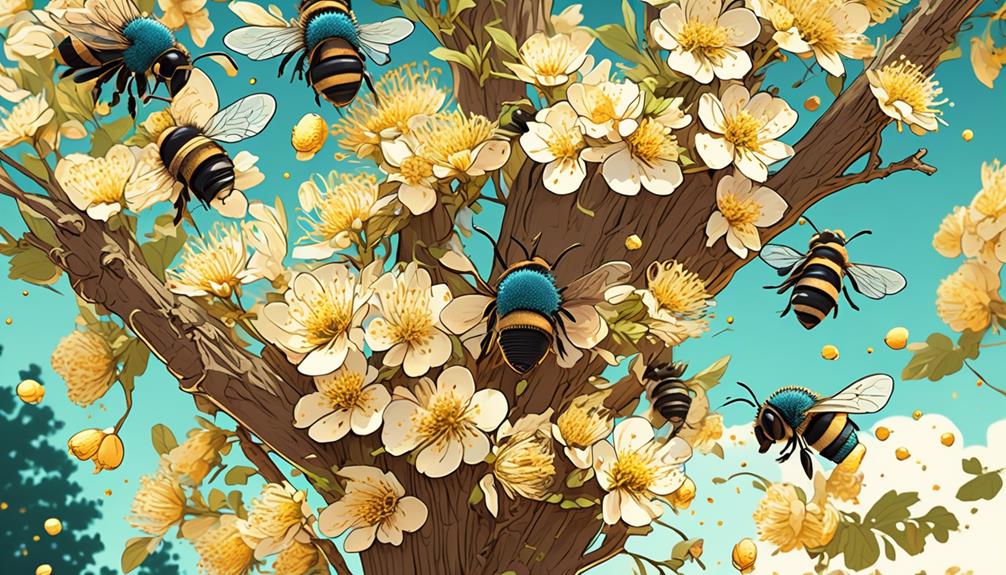
Surprisingly, Basswood trees play an integral role in the life cycle of Mason Bees, providing them with an abundant source of pollen and nectar. This isn't a random occurrence, but a carefully orchestrated symbiotic relationship between the bees and the trees. They're more than just a food source.
You see, the flowers of Basswood trees bloom at a time when many other plants aren't, thereby ensuring a steady supply of food for the bees.
Moreover, the flowers of Basswood trees are uniquely structured. Their petals fold down, creating a landing platform for the bees, making it easier for them to collect pollen. This is crucial because the more efficiently a bee can gather pollen, the more time it has for other vital activities, such as mating and nesting.
But it's not a one-way street. In return for the feast, Mason Bees play a vital role in pollinating Basswood trees. They carry pollen from male to female flowers, assisting in the fertilization process that leads to the production of seeds.
Thus, both Mason Bees and Basswood trees benefit from this extraordinary relationship, demonstrating the interconnectedness of nature's diverse species.
Mason Bees and Basswood: A Connection

Delving deeper into the connection between Mason Bees and Basswood trees, it becomes evident that their relationship is a fine example of mutualism in nature, where each party benefits from the other's existence.
Mason Bees, you see, are attracted to the Basswood tree's nectar and pollen. This attraction isn't just for the bees' feeding needs; it's also a crucial part of their breeding process.
As these bees flit from flower to flower, they inadvertently carry pollen on their bodies, promoting cross-pollination as they go. This process is essential for the Basswood tree's reproduction. So, while the Mason Bees are busily feeding and preparing for breeding, they're also playing a significant role in the survival and propagation of the Basswood trees.
On the other hand, Basswood trees offer a rich and reliable source of food for the Mason Bees. The trees' blooming period aligns perfectly with the bees' active months, ensuring a steady supply of nectar and pollen when the bees need them most.
Enhancing Mason Bees' Habitat
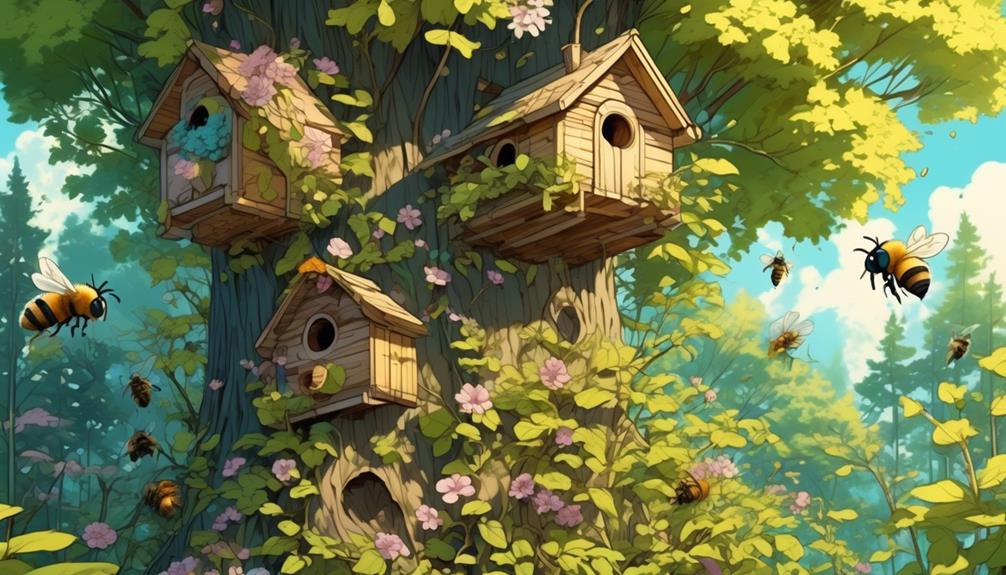
To enhance the habitat for Mason Bees, you need to understand their specific needs, which revolve around food sources, nesting sites, and safe overwintering locations.
For food, Mason Bees need nearby plants that produce nectar and pollen, like Basswood trees. In early spring, these trees bloom, providing a rich food source when few other plants are flowering.
Nesting sites are critical too. Mason Bees prefer nesting in small cavities, so providing tubes, reeds, or drilled blocks of wood in your garden can be beneficial. The sizes should be small, between 1/4 to 3/8 inch in diameter. It's also important to position these sites in a sunny, south-facing location protected from wind and rain.
Overwintering locations are the third necessity. Mason Bees spend the winter in their cocoons inside the nest, so the nests must stay dry and undisturbed. If you're providing artificial nesting sites, you might want to move them to an unheated shed or garage for the winter to ensure their safety.
Conclusion
Absolutely, Mason bees do have a special affinity for Basswood trees. The tree's pollen and nectar offer a rich food source for these industrious pollinators.
By planting Basswood trees, you're not only enhancing the bees' habitat but also supporting their crucial role in our ecosystem.
So, if you're looking to attract these beneficial insects, incorporating Basswood trees into your landscape is a smart move. It's a win-win for you and the bees!


